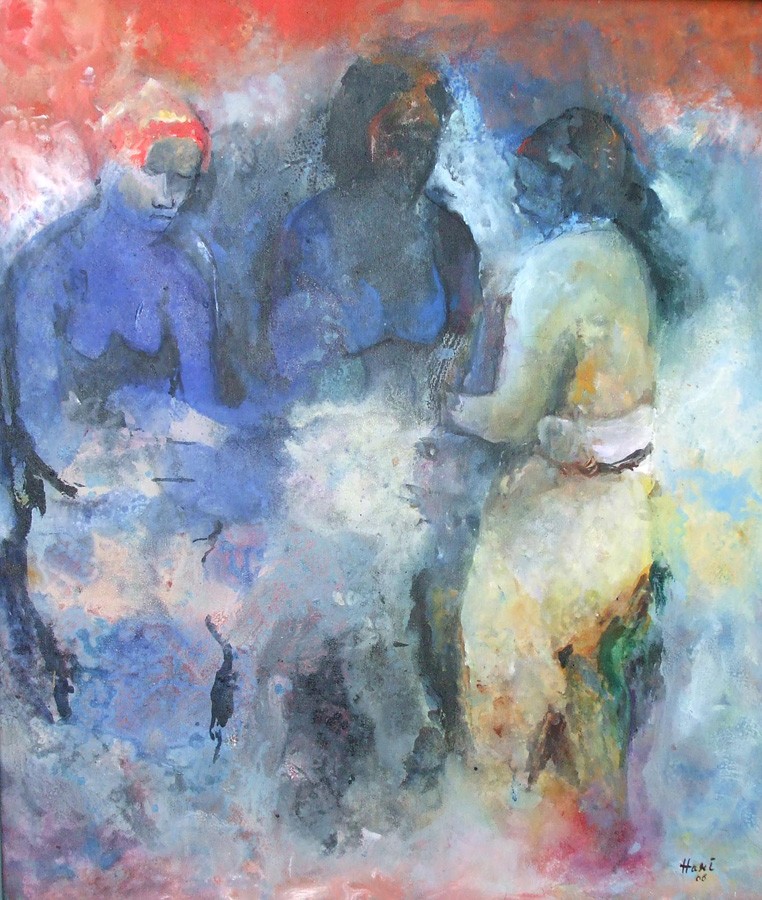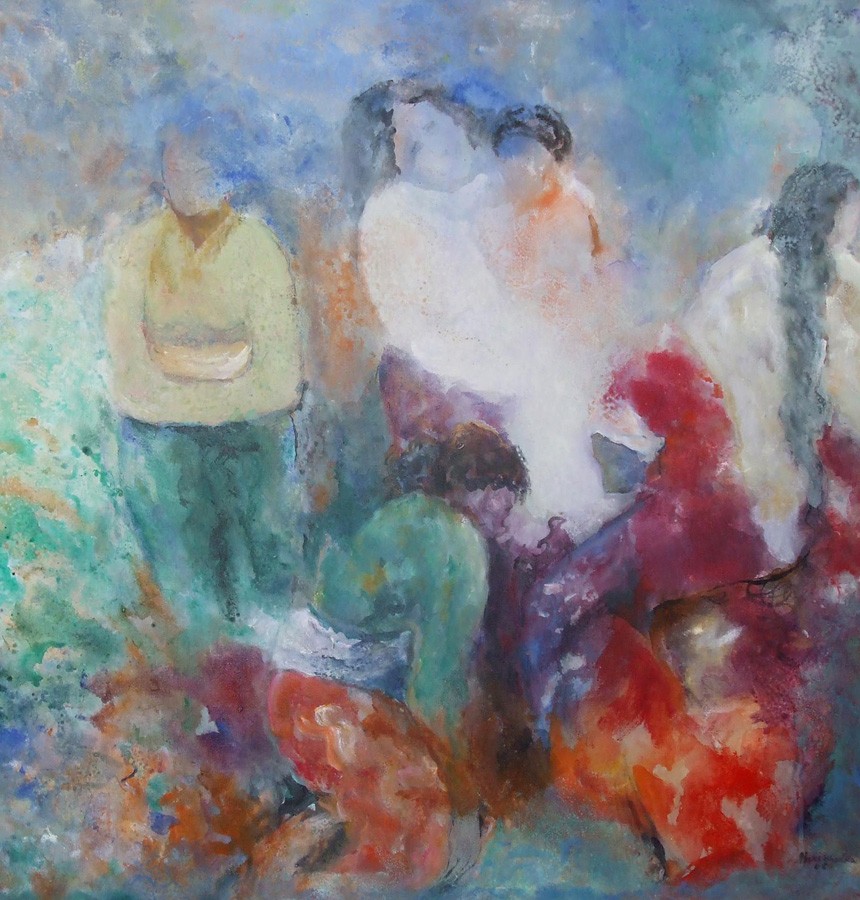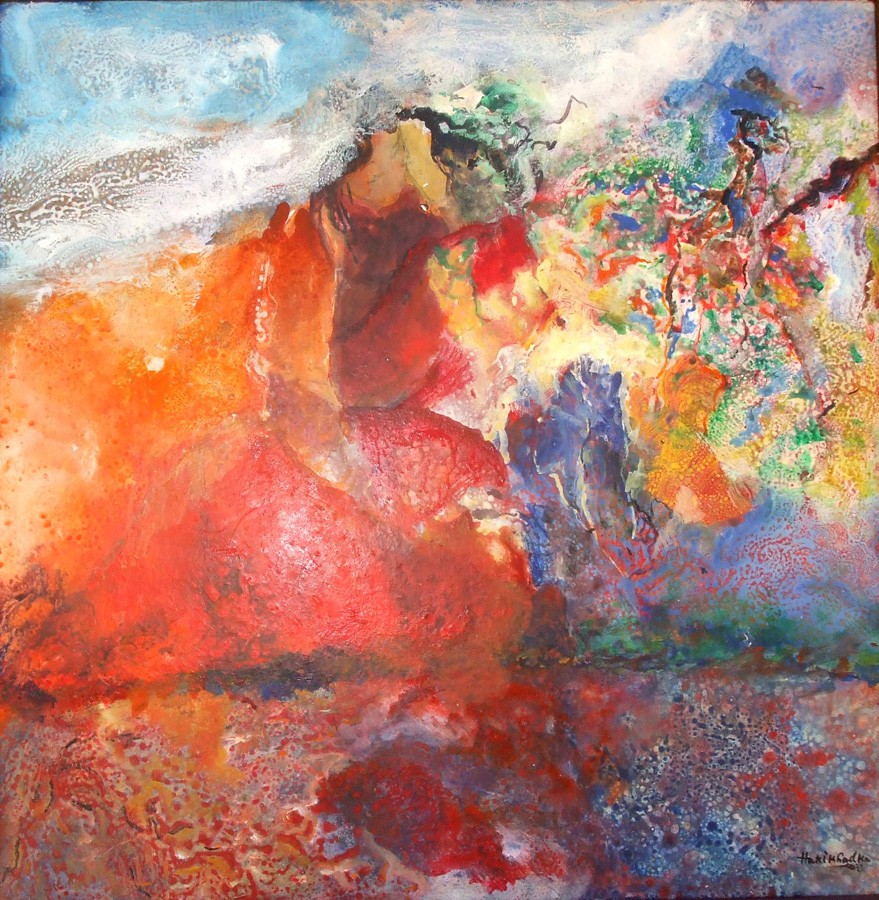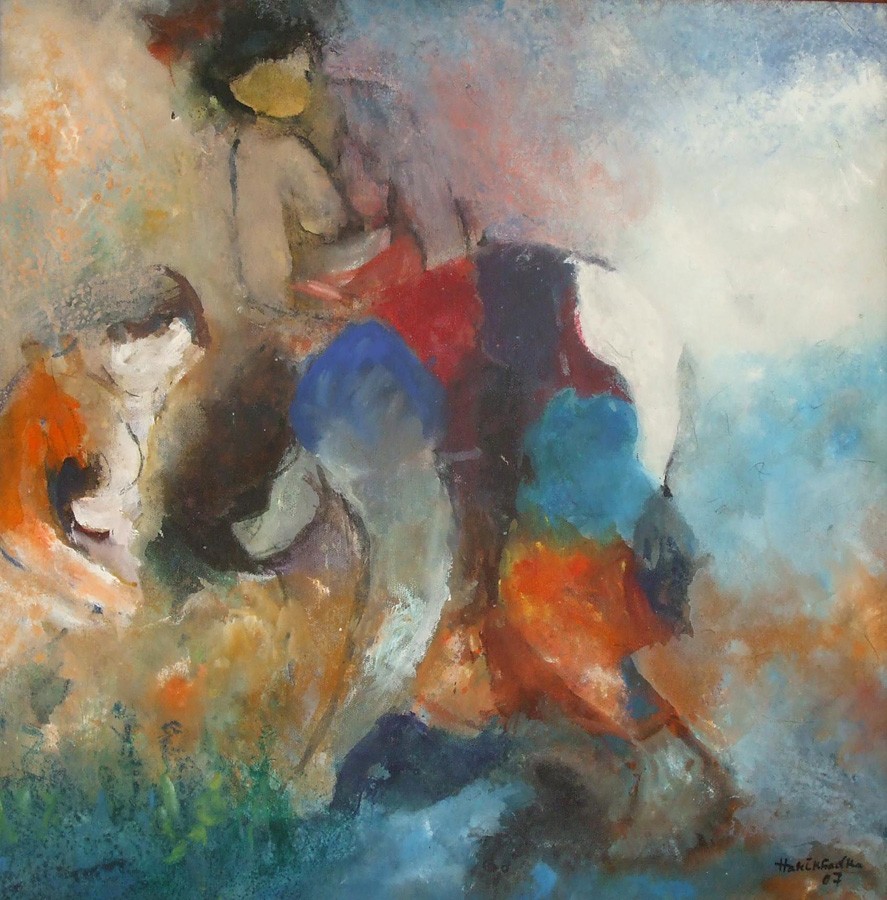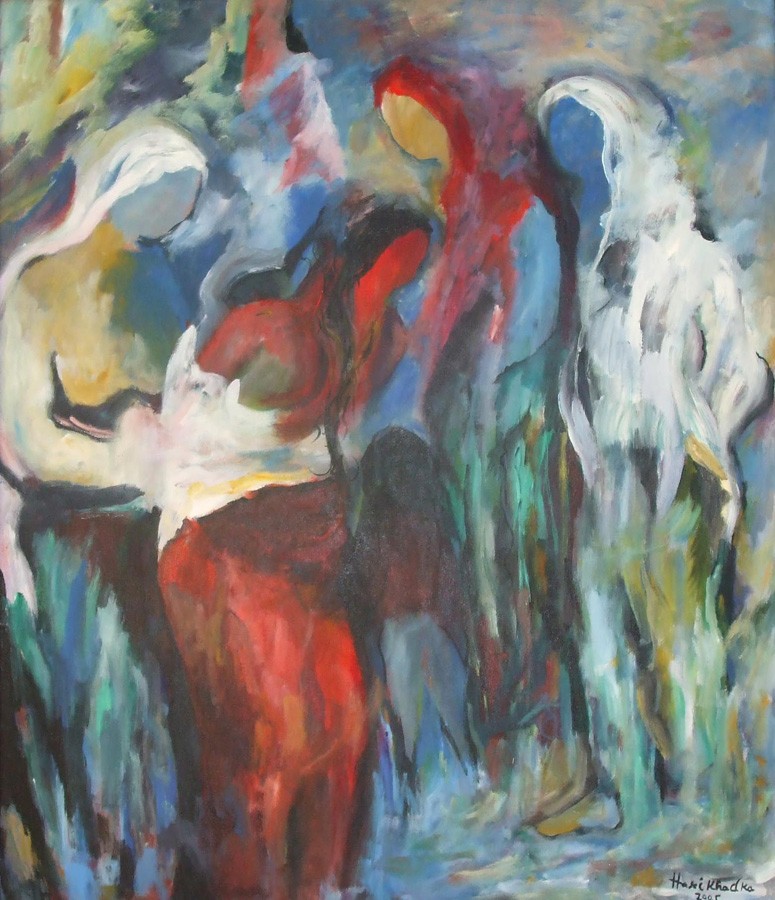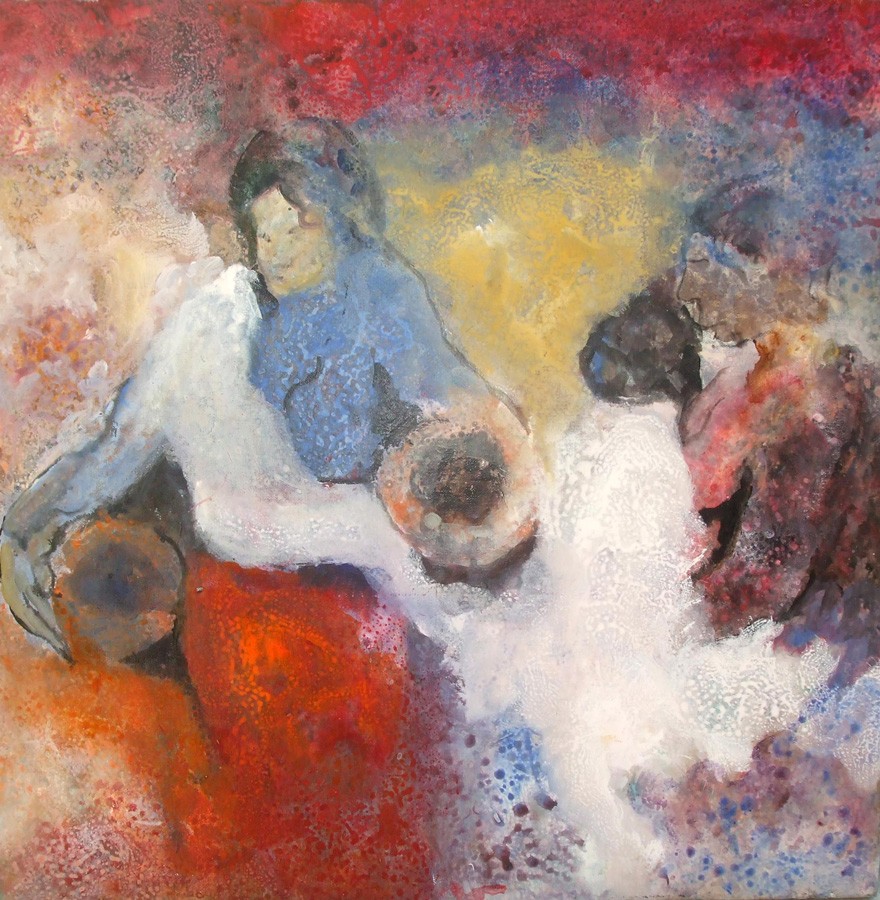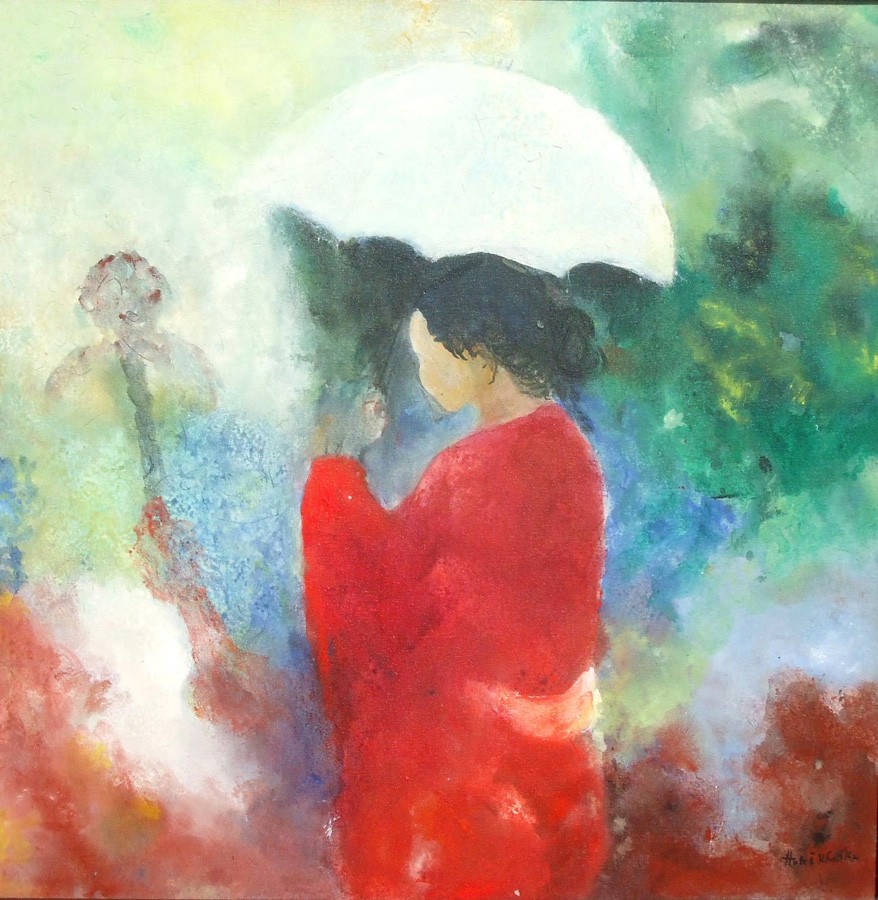Hari Khadka
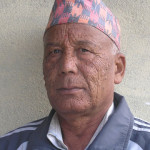
Hari Khadka’s works share some of the contents of traditional Nepali sculptures. Most of his paintings are figurative that present immediate, poignant experience of life. They are imbued with a sense of nostalgia and longing for what has been lost. As his wife had passed away, some female figures might be her representations. The figures expect the pleasant human relationship and intimacy.
Hari Khadka’s works share some of the contents of traditional Nepali sculptures. Most of his paintings are figurative that present immediate, poignant experience of life. They are imbued with a sense of nostalgia and longing for what has been lost. As his wife had passed away, some female figures might be her representations. The figures expect the pleasant human relationship and intimacy. The daily works of village folks like washing clothes, fetching water, gardening and working in the field are also captured splendidly. Their thin body and tattered outfits depict their hardship and toil. Their relatively dark facial expression implies their inner anxiety. However, they are struggling against the adverse situation.
Some paintings capture the romantic experience of the presented characters. The female figures are strolling in the dream-like exotic setting. The viewers perceive the rhythm in their graceful movement. The figures of women are dominant than that of men. Some male characters are like phantom, and receding in the distance. However, there appears invisible and emotional link between the lovers. Despite the elderliness of the characters, love is recurrent theme in his paintings.
To express such human existence and experiences, the artist exploits rhythmic lines and melodious colours. The free-flowing forms aptly express the human feeling. To reinforce the emotional quality, the artist now and again alters the colours. The intensity of inner feeling is focused rather than external form.
Nevertheless, some of his works depict religio-cultural images like Hindu temples, shrines, Shivalinga, trident and so on. In this sense, he reintegrates the images of early art. Such works capture the spiritual ambience of Nepali culture and rituals.
Date of Birth : 1949, Lalitpur
Education :
Self-Taught, Trainned under the guidance of renowned artist Lain Singh Bangdel (1966-2003)
Solo Exhibition :
1987 : Siddhartha Art Gallery, Kathmandu
2003 : Nepal Art Council Gallery, Kathmandu
Group Exhibitions :
1981 : NAFA, Kathmandu
1993-95 : Belgium
1994 : Kathmandu & Germany
1995 : Lalit Festival, Lalitpur & Rabindra Sadan, Kolkatta, India
1996 : Sikkim, India
1999 : Nepal Art Council, Kathmandu & Delhi & Bhopal, India
2000 : Brewhouse Theatre & Art Council, UK, Letchworth Museum & Art Gallery, UK, Hanover Fine Arts, UK, Clotworthy Art Center, UK, Nepal Art Council, Kathmandu
2002 : Dhankuta, Nepal Art Council, Kathmandu
2003 : NWS’s 1st Retrospective Exhibition, Nepal Art Council, Kathmandu
2004 : NWS’s 2nd Retrospective Exhibition, Nepal Art Council, Kathmandu
2005 : Art Club & Art Club Cox Bar, Bangladesh, Asian Cultural Exchange Foundation-workshop & Exhibition, Lota Gallery, Gangu, South Korea
2006 : 12th Asian Biennale, Bangladesh
2007 : Int’I Mother Language Day Art Festival organized by Embassy of Bangladesh, Nepal
2008 : Kalapunja (SOMA), Kathmandu
Awards :
1999 : Special Prize, Ranglal Bangdel Memorial Prize
2009 : Special Award, Devkota Centenary Painting Award
Membership :
Nepal Kalakar Samaj, Founding Member-New Art Circle, Water Colour Society & Society of Modern Art (SOMA)
Collections:
Malla Hotel, Kathmandu, and private collections in Nepal, UK, Belgium, Germany, National Museum-South Korea
